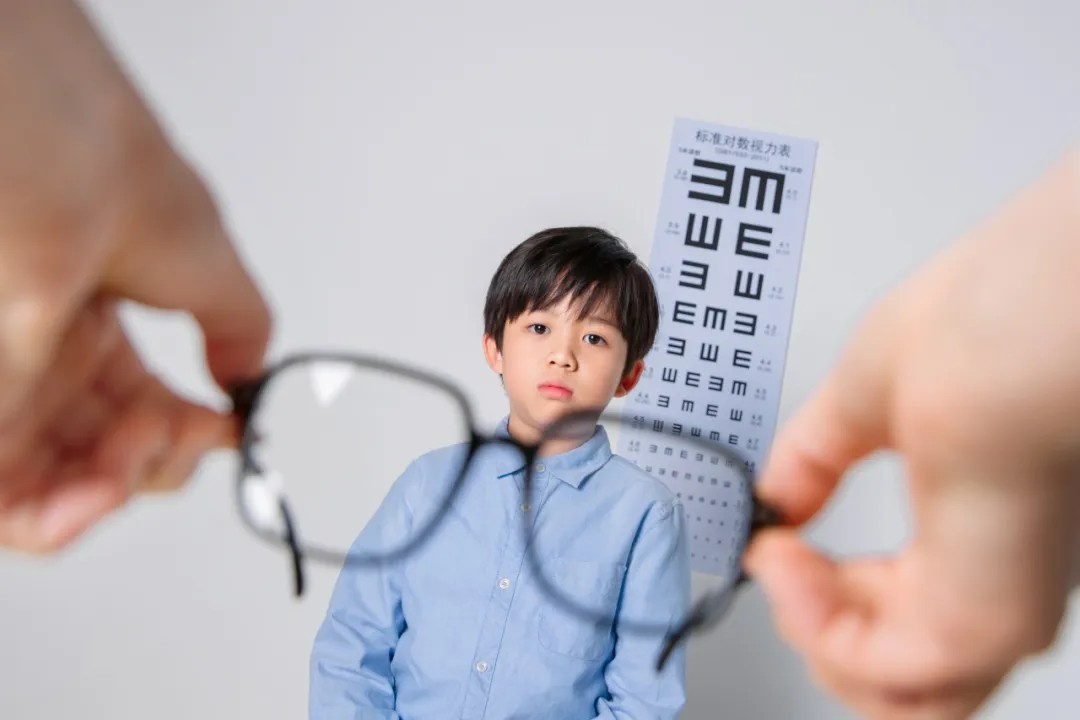source: 2025-04-27 16:47:54 Secondary reading
“Mom, the words on the blackboard are blurry again!”
Six months after getting new glasses, Duo Duo complained during winter break. A follow-up exam revealed alarming news: her myopia had progressed by 50 degrees!
The doctor explained: “Her axial elongation accelerated, and the lens parameters no longer matched her eyes!”
Q1: Why Might Myopia Progress After Getting Glasses?
1. Eyes Are Still Developing
Children’s eyes and visual systems are in a dynamic developmental phase. Parameters like axial length, corneal curvature, and refractive error change significantly yearly. Even as growth slows, myopia prevention remains critical.
Risk: Uncorrected lens parameters cause eye strain, reduced correction efficacy, and accelerated myopia progression.
2. Poor Habits Persist
Myopia often stems from bad habits (e.g., prolonged near work, poor lighting). Without addressing these, even with glasses, myopia may progress. Regular follow-ups monitor changes and adjust interventions.
3. Glasses Have a “Lifespan”
All lenses (frames, OK lenses, defocus lenses) degrade over time. Wear and tear, frame misalignment, or infections can compromise correction and comfort. Regular checks ensure optimal fit and eye health.
4. Inaccurate Prescription or Adaptation Issues
Errors in refraction or initial adaptation (e.g., refusing to wear glasses, frequent removal) may lead to blurred retinal imaging, stimulating axial elongation.
Key Takeaway: Regular follow-ups are essential for sustained eye health!

Q2: What Metrics Should Be Monitored During Follow-Ups?
1. Axial Length and Refractive Error
Axial length is the gold standard for tracking myopia progression. Studies show axial elongation often precedes measurable myopia by a year.
Refractive error validates lens suitability, especially during growth spurts.
2. Lens and Frame Condition
Lens wear: Scratched coatings reduce light transmission, increase glare, and disrupt defocus zones in defocus lenses.
Frame alignment: Misaligned temples or nose pads shift optical centers, reducing efficacy.
3. Corneal Health (OK Lens Wearers)
Corneal topography and slit-lamp exams detect damage or irregularities.
Adjustments are needed as corneal shape evolves with growth.
4. Habit Correction
Follow-ups provide opportunities to reinforce healthy habits:
Increase outdoor time.
Follow the 20-20-20 rule (20-second break every 20 minutes to view 20 feet away).
Optimize lighting and posture.
Q3: How Often Should Follow-Ups Occur?
New glasses wearers: Every 3 months.
Children with strabismus, amblyopia, or other conditions: More frequent visits.
Stable myopia in adults: Every 6–12 months.
Final Note:
Glasses are just the start of vision management. Regular follow-ups monitor changes, address risks early, and ensure glasses remain effective partners for healthy eyes. Prevention never stops!